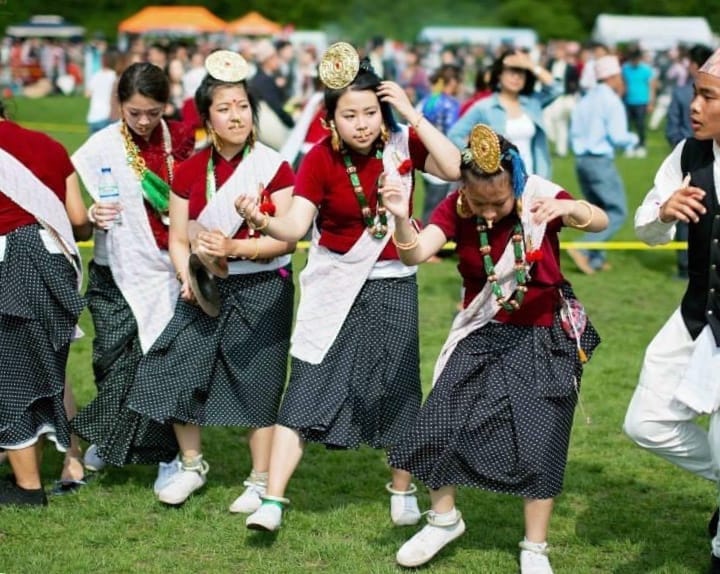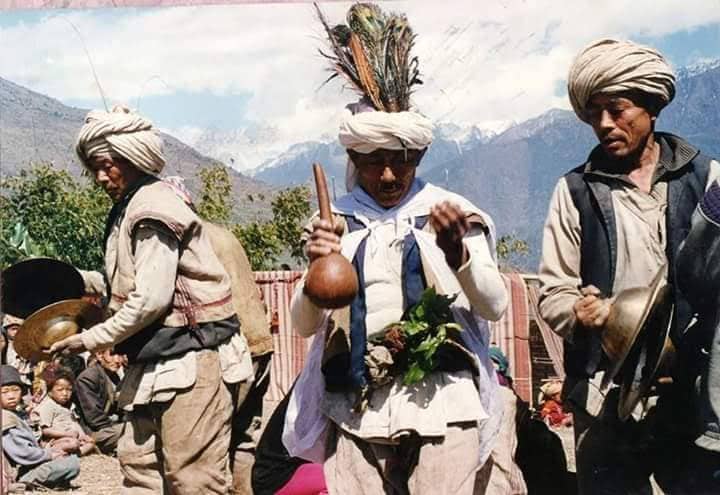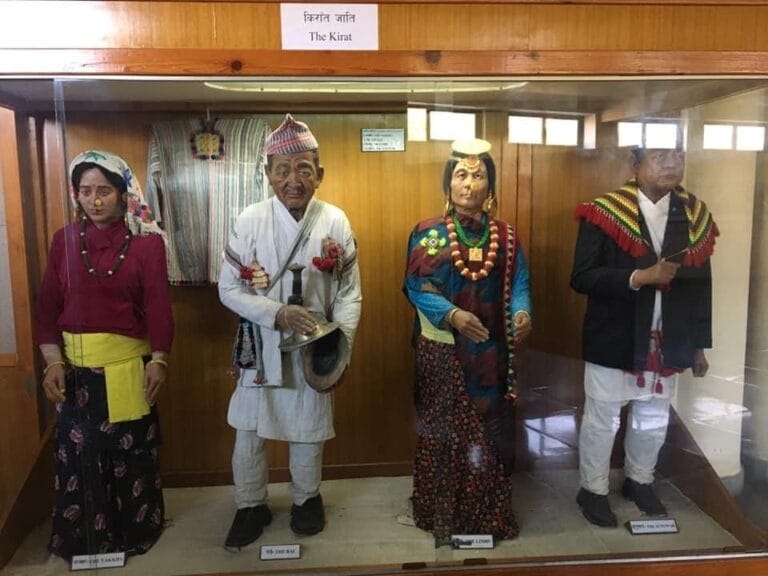Published on 03 October 2024
Challenges of Kirati People: A Journey Through History and Culture
The term “Kirati” has deep cultural and historical importance, especially for the indigenous tribes of the Himalayan region, including Nepal and parts of India. It comes from the Sanskrit word “Kirāta,” which describes the tribes who lived in the tough, mountainous areas, far from the advanced Indo-Aryan civilizations in the plains. More than just a name, “Kirati” represents their rich heritage and strong traditions. However, the Kirati people face many challenges today, as they work to protect their culture while dealing with modernization, economic struggles, and a lack of resources.
Historical Significance of the Kirati People
Ancient texts, such as the Mahabharata, offer valuable insights into the history of the Kirati people. For instance, in this epic, Bhima, one of the Pandava brothers, encounters the Kirati tribes in the eastern part of Videha, which is now part of Bihar, India. This interaction not only demonstrates that the Kirati people have been present in the Indian subcontinent for a long time but also underscores their early connections with prominent historical figures and civilizations. Moreover, it highlights the significant role they played in the region’s cultural and historical narrative.
The Kirati People in Hindu Scriptures: Insights from the Puranas
Modern Challenges and Cultural Preservation of the Kirati People
In today’s world, the Kirati people face significant challenges in maintaining their cultural identity, particularly due to the impacts of globalization and modernization. As a result, their traditional practices are increasingly at risk, making it more important than ever to take deliberate steps to protect and preserve their heritage. Nevertheless, despite these challenges, the Kirati communities continue to work tirelessly to safeguard their culture. Moreover, they are actively ensuring that their unique customs and traditions are passed down to future generations, thereby reinforcing their identity and resilience in a rapidly changing world.
Conclusion
The term “Kirati” is more than just a cultural label; it represents the strength and lasting spirit of indigenous tribes who have kept their culture alive through many years of change. The word “Kirat” reflects their history of migration, cultural adaptation, and recognition as the Himalayan people known as “The Kirati.” Even with the challenges of globalization and modernization, the Kirati people continue to protect and care for their traditions, making sure their cultural legacy stays strong for future generations.
Discover, Share and Celebrate the legacy of the Eastern Himalayas
Support the preservation of Kirati heritage by learning more about the history and traditions of the Kirati people. Share this article and leave a comment to raise awareness and promote recognition of their unique cultural identity. Your support can help ensure that the rich cultural legacy of the Kirati people continues to thrive for future generations.
The term “Kirati” has important cultural and historical meaning, especially among the indigenous tribes of the Himalayan region, including Nepal and parts of India. It comes from the Sanskrit word “Kirāta,” which refers to the tribes that have lived in the tough, mountainous areas, away from the more developed plains where larger Indo-Aryan civilizations grew. “Kirati” is not just a name for these people, but also represents their rich heritage and long-lasting traditions.
Historical Significance of the Kirati People
Ancient texts, such as the Mahabharata, offer valuable insights into the history of the Kirati people. For instance, in this epic, Bhima, one of the Pandava brothers, encounters the Kirati tribes in the eastern part of Videha, which is now part of Bihar, India. This interaction not only demonstrates that the Kirati people have been present in the Indian subcontinent for a long time but also underscores their early connections with prominent historical figures and civilizations. Moreover, it highlights the significant role they played in the region’s cultural and historical narrative.
The Kirati People in Hindu Scriptures: Insights from the Puranas
Modern Challenges and Cultural Preservation of the Kirati People
In today’s world, the Kirati people face significant challenges in maintaining their cultural identity, particularly due to the impacts of globalization and modernization. As a result, their traditional practices are increasingly at risk, making it more important than ever to take deliberate steps to protect and preserve their heritage. Nevertheless, despite these challenges, the Kirati communities continue to work tirelessly to safeguard their culture. Moreover, they are actively ensuring that their unique customs and traditions are passed down to future generations, thereby reinforcing their identity and resilience in a rapidly changing world.
Conclusion
The term “Kirati” is more than just a cultural label; it represents the strength and lasting spirit of indigenous tribes who have kept their culture alive through many years of change. The word “Kirat” reflects their history of migration, cultural adaptation, and recognition as the Himalayan people known as “The Kirati.” Even with the challenges of globalization and modernization, the Kirati people continue to protect and care for their traditions, making sure their cultural legacy stays strong for future generations.
Discover, Share and Celebrate the legacy of the Eastern Himalayas
Support the preservation of Kirati heritage by learning more about the history and traditions of the Kirati people. Share this article and leave a comment to raise awareness and promote recognition of their unique cultural identity. Your support can help ensure that the rich cultural legacy of the Kirati people continues to thrive for future generations.
The term “Kirati” has important cultural and historical meaning, especially among the indigenous tribes of the Himalayan region, including Nepal and parts of India. It comes from the Sanskrit word “Kirāta,” which refers to the tribes that have lived in the tough, mountainous areas, away from the more developed plains where larger Indo-Aryan civilizations grew. “Kirati” is not just a name for these people, but also represents their rich heritage and long-lasting traditions.
Historical Significance of the Kirati People
Ancient texts, such as the Mahabharata, offer valuable insights into the history of the Kirati people. For instance, in this epic, Bhima, one of the Pandava brothers, encounters the Kirati tribes in the eastern part of Videha, which is now part of Bihar, India. This interaction not only demonstrates that the Kirati people have been present in the Indian subcontinent for a long time but also underscores their early connections with prominent historical figures and civilizations. Moreover, it highlights the significant role they played in the region’s cultural and historical narrative.
The Kirati People in Hindu Scriptures: Insights from the Puranas
Modern Challenges and Cultural Preservation of the Kirati People
In today’s world, the Kirati people face significant challenges in maintaining their cultural identity, particularly due to the impacts of globalization and modernization. As a result, their traditional practices are increasingly at risk, making it more important than ever to take deliberate steps to protect and preserve their heritage. Nevertheless, despite these challenges, the Kirati communities continue to work tirelessly to safeguard their culture. Moreover, they are actively ensuring that their unique customs and traditions are passed down to future generations, thereby reinforcing their identity and resilience in a rapidly changing world.
Conclusion
The term “Kirati” is more than just a cultural label; it represents the strength and lasting spirit of indigenous tribes who have kept their culture alive through many years of change. The word “Kirat” reflects their history of migration, cultural adaptation, and recognition as the Himalayan people known as “The Kirati.” Even with the challenges of globalization and modernization, the Kirati people continue to protect and care for their traditions, making sure their cultural legacy stays strong for future generations.
Discover, Share and Celebrate the legacy of the Eastern Himalayas
Support the preservation of Kirati heritage by learning more about the history and traditions of the Kirati people. Share this article and leave a comment to raise awareness and promote recognition of their unique cultural identity. Your support can help ensure that the rich cultural legacy of the Kirati people continues to thrive for future generations.




